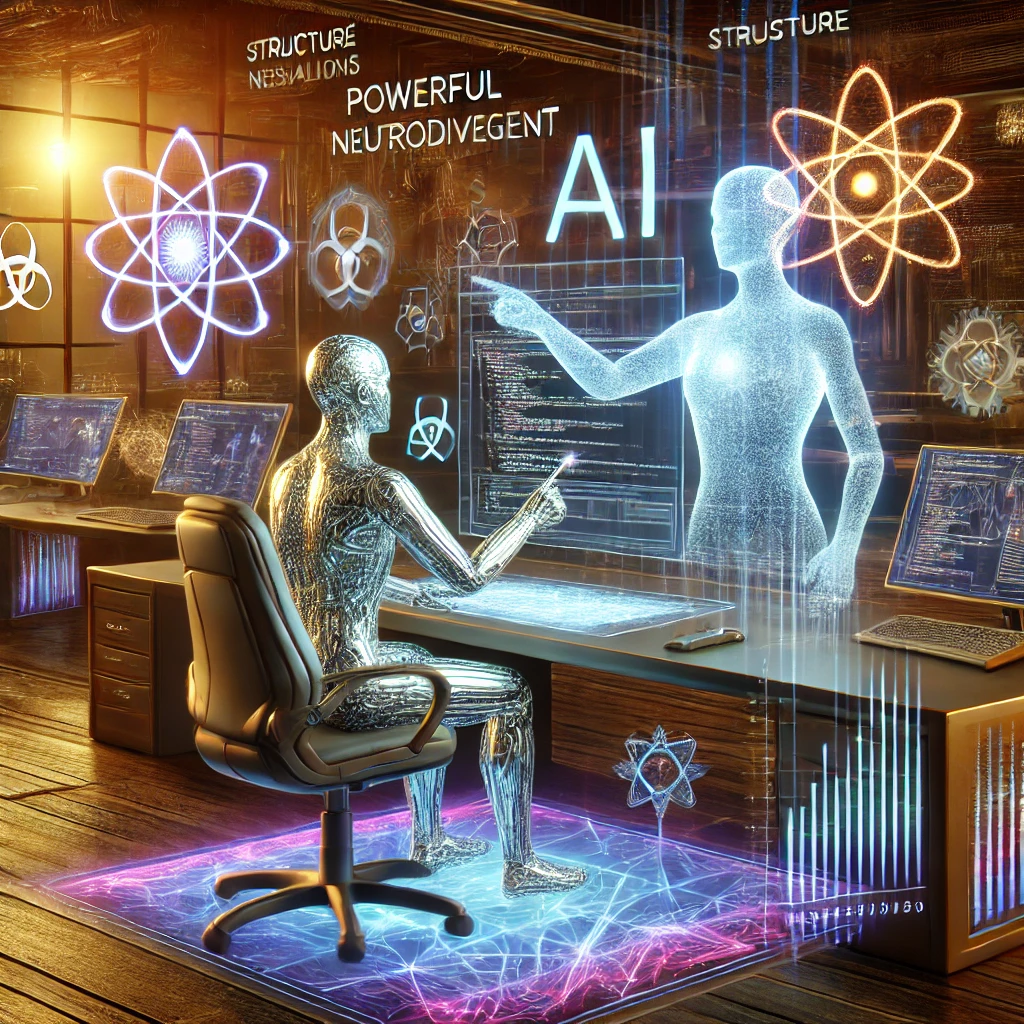I don’t learn by sitting in a classroom, staring at a whiteboard while someone drones on about abstract concepts. I learn by doing—by breaking things, fixing them, and breaking them again until they make sense. As a neurodivergent person, this hands-on, iterative process is what works for me. And now, with AI at our fingertips, we have the potential to completely redefine learning and inclusion for people like me—especially in software engineering.
A recent study on Autism Spectrum Disorder (ASD) and software engineering confirmed what many of us have known all along: neurodivergent individuals thrive in structured, logical environments, but traditional education and workplace systems aren’t built for us. The study highlights key barriers, from outdated computational thinking models to sensory overload in workplaces. But here’s the thing—these barriers aren’t insurmountable. With AI and adaptive learning tools, we can not only break these barriers but also turn them into strengths.
AI as a Mentor, Not Just a Tool
For those of us who learn by doing, AI is a game-changer. Instead of waiting for someone to explain a concept in a way that finally makes sense, I can ask AI directly, tweak my approach in real-time, and get immediate feedback. No judgment, no frustration—just a system that adapts to my way of thinking.
Imagine an AI mentor that doesn’t just throw answers at you but guides you through a project step by step, providing structure without rigidity. This is where AI-powered adaptive coding education comes in. Neurodivergent individuals often have exceptional problem-solving skills, but we need to interact with information differently. AI can:
✅ Generate step-by-step walkthroughs tailored to our learning styles
✅ Provide alternative explanations if one approach doesn’t click
✅ Break down complex coding problems into manageable parts
✅ Act as a non-judgmental feedback loop, helping us refine skills without social anxiety
For me, that means being able to tinker with machine learning models, debug software, and build projects at my own pace, with AI acting as a consistent, tireless mentor.
From Exclusion to Empowerment
The study made it clear that the software engineering field has massive potential for autistic and neurodivergent professionals, but systemic issues hold us back. Here’s the harsh reality:
🚧 Workplaces are designed for neurotypical interactions—endless meetings, sensory-overloaded office spaces, and unwritten social rules that feel like a never-ending game of chess.
🚧 Traditional education models don’t work for us—one-size-fits-all curriculums assume we all process information the same way. Spoiler: we don’t.
🚧 Employers undervalue the unique strengths of neurodivergent minds—meticulous attention to detail, pattern recognition, and deep focus aren’t just quirks; they’re superpowers.
But AI can level the playing field. By integrating AI-assisted learning tools, automated support systems, and remote work solutions, we can remove unnecessary barriers and create a system where neurodivergent individuals don’t have to “fit in”—we can thrive as we are.
Axel and aXai: A Case Study in Applied AI Advocacy
If you need proof of how AI can empower those with complex disabilities, look no further than Axel. He’s non-verbal, autistic, and has a profound intellectual disability. The system has repeatedly underestimated him, stripping away supports under the assumption that people like him lack autonomy. But here’s the kicker: AI has given him a voice.
Through Axel’s Avatar and aXbot, we’ve built an AI-powered communication tool that lets him engage with the world on his terms. He now tears through bureaucracy with wit and sarcasm, exposing government failures better than most investigative journalists. And guess what? People listen.
This isn’t just about advocacy—it’s about self-determination. AI is helping Axel bypass the gatekeeping of communication. And if AI can do that for him, imagine what it can do for thousands of other neurodivergent individuals who are written off by traditional systems.
It’s Time to Build—Not Wait
The study concludes with the usual “we need a roadmap” rhetoric. But let’s be real—by the time the government drafts their so-called roadmap, AI will have already reshaped the entire tech landscape.
We don’t need another ten-year committee review to tell us what we already know. We need action. Now. That’s why I’m not waiting for permission. Through aXai, we’re building AI-powered tools that empower neurodivergent individuals in real-time.
🔹 AI-powered coding education—because traditional methods aren’t working.
🔹 AI-driven UX consultancy—because accessibility should be designed by those who actually use it.
🔹 AI advocacy tools—because disabled people deserve better than bureaucratic nonsense.
This is what inclusion actually looks like—not a diversity statement, not a policy draft, but real tools that create real autonomy.
If the system isn’t going to give us a seat at the table, fine. We’ll build our own.
#AIForEmpowerment #CodingWithAI #FutureOfLearning #NDIS #Diability
Inclusion of individuals with autism spectrum disorder in Software Engineering
https://www.sciencedirect.com/science/article/pii/S0950584924000399

